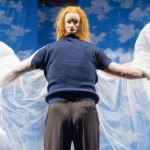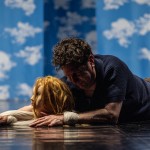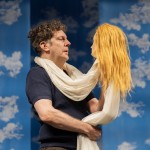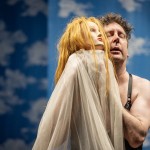
CECI N’EST PAS UN COUPLE
Performance by Ville Walo
Ville and Jessica are running towards eachother on a sunny deserted beach.
Jessica is happy.
Ville is happy.
Everything is well. Small fluffy white clouds float on the sky.
Jessica has a female face and a male body.
Ville has a male face and a female body.
Jessica’s face looks like a haircut training head.
Ville’s face looks like juggler Ville Walo.
All is perfect.
Waves roll on the sand.
Ville and Jessica have forgotten their past wounds.
They love eachother.
They are happy.
Wind flutters their hair.
Something bad must happen soon.
There’s no couple consisting of two persons on stage, and we don’t see a real life relationship. Manipulation, consent and identity take the stage. The performance grasps the current discussion about the hot topics of human relationships and self-definition. The boundary between self and other is tested by acts of tenderness and violence. Interaction is fictional and illusory in the solo performance.
When the performer handles a lifeless doll as his partner, we see how the boundary between two individuals is drawn, crossed and dissolves. Selfhood is defined in relation to the partner, who is left with the role of a beloved, fetishized or broken imaginary being. This virtuality is reflected also in how the images of the performance have been modified using artificial intelligence. There’s always something inhumane, wrong or excessive in them.








